
The sunflower seed is the fruit of the sunflower. There are three types of commonly used sunflower seeds: linoleic, high oleic, and sunflower oil seeds. Each variety has its own unique levels of monounsaturated, saturated, and polyunsaturated fats. The information in this article refers mainly to the linoleic variety.
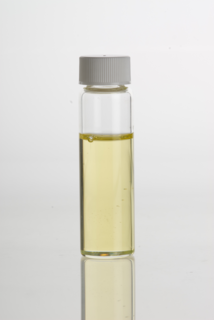
Sesame oil is an edible vegetable oil derived from sesame seeds. Besides being used as a cooking oil in India, it is used as a flavour enhancer in Middle Eastern, African, and Southeast Asian cuisines. It has a distinctive nutty aroma and taste. The oil is used for cooking, and is one of the earliest-known crop-based oils. Worldwide mass modern production is limited due to the inefficient manual harvesting process required to extract the oil.
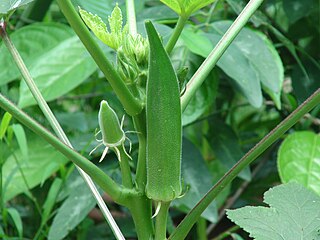
Okra or okro, Abelmoschus esculentus, known in many English-speaking countries as ladies' fingers or ochro, is a flowering plant in the mallow family. It is valued for its edible green seed pods. The geographical origin of okra is disputed, with supporters of West African, Ethiopian, and South Asian origins. The plant is cultivated in tropical, subtropical and warm temperate regions around the world.

A pumpkin seed, also known as a pepita, is the edible seed of a pumpkin or certain other cultivars of squash. The seeds are typically flat and asymmetrically oval, has a white outer husk, and is light green in color after the husk is removed. Some cultivars are huskless, and are grown only for their edible seed. The seeds are nutrient- and calorie-rich, with especially high content of fat, protein, dietary fiber, and numerous micronutrients. Pumpkin seed can refer either to the hulled kernel or unhulled whole seed, and most commonly refers to the roasted end product used as a snack.
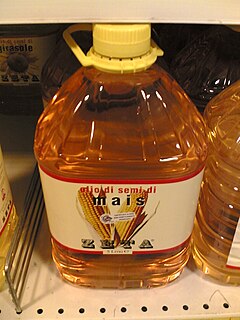
Corn oil is oil extracted from the germ of corn (maize). Its main use is in cooking, where its high smoke point makes refined corn oil a valuable frying oil. It is also a key ingredient in some margarines. Corn oil is generally less expensive than most other types of vegetable oils. One bushel of corn contains 1.55 pounds of corn oil. Corn agronomists have developed high-oil varieties; however, these varieties tend to show lower field yields, so they are not universally accepted by growers.

Guizotia abyssinica is an erect, stout, branched annual herb, grown for its edible oil and seed. Its cultivation originated in the Ethiopian highlands, and has spread to other parts of Ethiopia. Common names include noog/nug ; niger, nyger, nyjer, or niger seed ; ramtil or ramtilla; inga seed; and blackseed.

Soybean oil is a vegetable oil extracted from the seeds of the soybean. It is one of the most widely consumed cooking oils. As a drying oil, processed soybean oil is also used as a base for printing inks and oil paints.

Sunflower oil is the non-volatile oil pressed from the seeds of sunflower. Sunflower oil is commonly used in food as a frying oil, and in cosmetic formulations as an emollient. The world's total production of sunflower oil in 2014 was nearly 16 million tonnes, with Ukraine and Russia as the largest producers.

Tea seed oil is an edible plant oil. It is obtained the seeds of Camellia oleifera.

Perilla oil is an edible vegetable oil derived from perilla seeds. Having a distinct nutty aroma and taste, the oil pressed from the toasted perilla seeds is used as a flavor enhancer, condiment, and cooking oil in Korean cuisine. The oil pressed from untoasted perilla seeds is used for non-culinary purposes.
Candlenut oil or kukui nut oil is extracted from the nut of the Aleurites moluccanus, the candlenut or kuku'i.
Stillingia oil is gained by solvent from the plant seeds of the Sapium family such as, Sapium sebiferum and Sapium discolor. It is used as a drying agent in paints and varnishes. It dries readily on a glass plate in 4–6 hours. Stillingia oil's properties, such as a high iodine value, and chemical components classifies it as a drying oil. Why it has the appropriate properties to be a drying oil remain disputed. Following are three different arguments from J. Devine (1950), A. Crossley with T.P. Hilditch (1953), and V. C. Batterson with W. M. Potts (1938):
- "The literature analysis of stillingia oil, which has recently been shown to contain an abnormal spectroscopic component, does not accord with its excellent drying properties. In a re-examination of a number of commercial samples the abnormal component is shown to be 2: 4-decadienoic acid, present to the extent of 3% to 6%, and hitherto undetected in naturally occurring oils. This component behaves anomalously during analysis by alkali isomerization, but the effect can be allowed for and the remaining components of the oil are estimated approximately at 40% linolenic, 25% to 30% linoleic, 20% oleic and 9% saturated acids, together with a little conjugated triene acid of the elaeostearic type which is possibly an adulterant. The 2: 4-decadienoic acid may play a relatively prominent part in the drying and polymerizing properties of stillingia oil."
- "The glycerides of stillingia oil have been studied by resolution into a series of fractions by crystallization from acetone. Deca-2: 4-dienoic acid, which forms about 8% (mol.) of the total acids of the oil, is shown to occur almost exclusively as monodecadienoic di-C18-polyethenoid glycerides with the short-chain acyl group in the β-or symmetrical position. The chief constituents of the oil are linoleodilinolenins, decadienolinoleolinolenins and decadieno-dilinolenins, with lesser proportions of saturated-linoleolinolenins, saturated-dilinolenins, oleolinoleolinolenins and oleodilinolenins. Owing to the presence of the decadienoic acid (8%) with linolenic acid (51%) and linoleic acid (22%), the total proportion of tripolyethenoid glycerides (95%) in the oil is greater than in linseed oil and comparable with that in conophor oil. This accounts for the relative behaviour of stillingia oil and linseed oil as drying oils in paint films."
- "The sample of Chinese oil gave an iodine number of 169.0, a saponification value of 206.2, and a thiocyanogen value of 100.7, and was found to contain the following percentages of acids: Oleic 10.4%, linoleic 49.9%, linolenic 25.4%, palmitic 5.89%, stearic 2.64% and arachidicacid 0.14%. From the characteristics and composition of these samples, it would appear that stillingia is suitable for use in the manufacture of paints and varnishes."
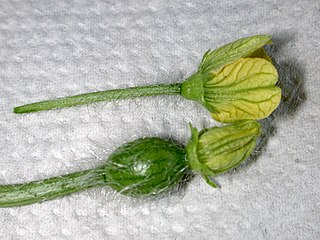
Watermelon seed oil is extracted by pressing from the seeds of the Citrullus lanatus (watermelon). It is particularly common in West Africa, where it is also called ootanga oil or kalahari oil. Watermelons probably originated almost 5,000 years ago in the Kalahari Desert of Africa where botanists have found its wild ancestors still growing. Watermelons migrated north through Egypt, and during the Roman era they were cultivated and prized. Traditionally, the seeds are extracted from the seed casing, and dried in the sun. Once dried, the seeds are pressed to extract the oil.
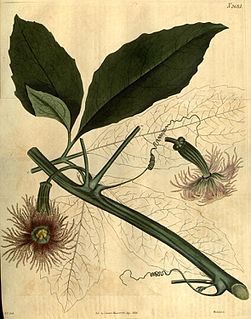
Telfairia pedata, commonly known as oysternut, queen's nut, Zanzibar oilvine, is a dioecious African liana which can grow up to 30 metres long, having purple-pink fringed flowers, and very large, many-seeded, drooping, ellipsoid berries which can weigh up to 15 kg. It is valuable for having edible fruit, seeds and oil.

Kusum oil is a type of oil extracted from the seed of the Kusum tree. The plant, which is also commonly known as Ceylon oak, lac tree, or Macassar oiltree, belongs to the Sapindaceae family. The schleichera family is named after J. C. Schleicher, a Swiss botanist, and the species name means "oily" or "rich in oil." The tree is native to South Asia, but is also found in some parts of Southeast Asia.
Vateria indica oil is extracted from the seeds of the Vateria indica plant, a species in the Dipterocarpaceae family. The Vateria indica plant is indigenous to the Western Ghats, Kerala and Tamil Nadu regions of India. It thrives in the evergreen forests, surviving up to 800 meters above sea level. Oil from the seeds of the plant is extracted through a chemical refining process which makes the plant edible.
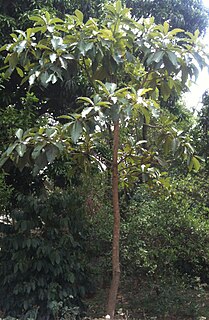
Phulwara oil is extracted from seeds of Phulwara tree. Phulwara Trees are also known locally as Chiuri Trees, Kaeleb Trees, or Butter Nut Trees. Refined Phulwara Oil is marketed as Phulwara Ghee.

Ambadi seed oil is extracted from seeds of the ambadi plant, also called kenaf. It is an annual or perennial plant in the Malvaceae family and related to the roselle plant. It is believed to be native to Asia or Tropical Asia.























